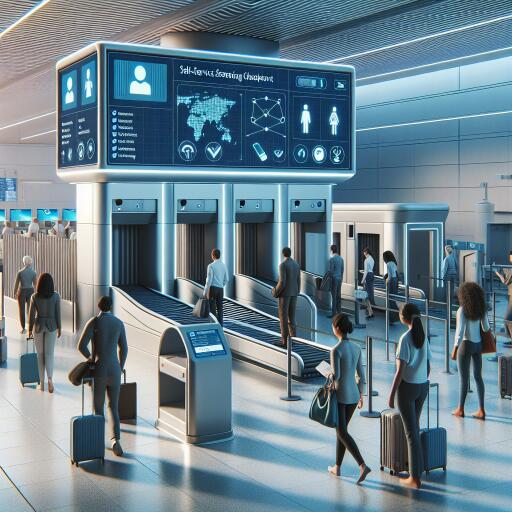TSA Introduces Self-Service Screening at Las Vegas Airport: A Look Into the Future of Travel
In an era where technological advancements continuously reshape our daily routines, the realm of air travel is not being left behind. The Harry Reid International Airport in Las Vegas is now home to an innovative step forward in airport security, courtesy of the Transportation Security Administration (TSA).
This week marks the debut of a new self-screening system aimed at transforming the way travelers navigate through security checks. This move by the TSA signifies a leap towards making airport check-ins faster, smoother, and more efficient.
Mirroring the convenience of supermarket self-checkout lanes, this system is set to undergo its first real-world test starting Wednesday. TSA Administrator David Pekoske spearheads this technological advancement but advises that travelers might need a little time to get used to this new method. Despite the anticipated learning curve, the primary goal remains clear: to enhance security, efficiency, and the passenger experience.
The cutting-edge system introduces travelers to virtual agents, designed to field questions and assist, albeit with physical TSA agents stepping in only when necessary. Moreover, it enables officers to remotely operate X-ray machines, a strategy aimed at reducing the staff required at security checkpoints.
Boasting features like automated conveyors that can independently reroute bags requiring further inspection and an advanced detection system, this system strives to maintain the essence of traditional TSA checkpoints while streamlining operations. However, passengers might encounter minor hitches, such as the sensitive detection system mistakenly flagging innocuous items like hair clips for additional screening.
Early feedback from travelers who have navigated the new system at Harry Reid International Airport has been largely positive. Many appreciate the system’s simplicity and efficiency, especially its capability to seamlessly send bags for secondary screening without human intervention. This automation is expected to free up officers to focus more intently on spotting genuine security threats.
Yet, TSA officials have been quick to temper enthusiasm with a note of caution, pointing out that while promising, the system is still in a testing phase and not immediately set for a broader rollout.
Its official launch is scheduled for March 11, by which time the hope is that any kinks will have been ironed out, making it a seamless part of the traveler’s experience. As this self-service screening option takes its first steps, it’s clear that the future of airport security may just be a lot more automated—and user-friendly—than we’ve ever imagined.
With this initiative, the TSA looks not only to bolster security but also to pivot towards a model that acknowledges and leverages technological advancements to benefit travelers. As airports around the globe watch on, this could herald a new era for international travel, blending security with convenience in ways previously thought impossible.










